Sylvia Schedelbauer
Oh, Butterfly!
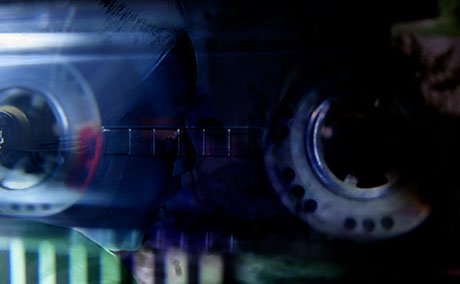
Oh, Butterfly!
An imaginary cassette tape repeats a famous piece of music in self-referential loops.
- Length: 19:30 mins
- Year: 2022
In the Beginning, Woman Was the Sun
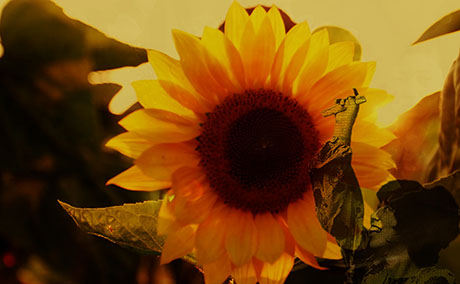
In the Beginning, Woman Was the Sun
A personal homage to Japanese suffragettes and feminists, and to the sun that shines within.
- Length: 17:30 mins
- Year: 2022
Labor of Love
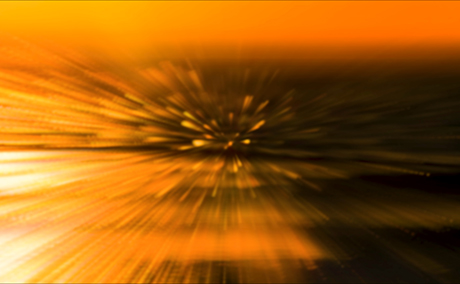
Labor of Love
An expanding feeling, unfolding new inflections — forever different, forever changing.
- Length: 11:30 mins
- Year: 2020
Wishing Well
Wunschbrunnen
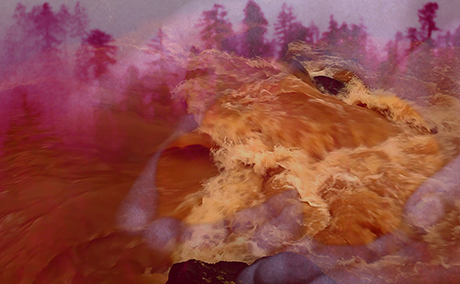
Wishing Well
Gushing colors. A time disjointed, yet synchronous.
A transcendent turn, a quest for agency, a reunion with currents of the forest.
- Length: 13 mins
- Year: 2018
Sea of Vapors
Meer der Dünste
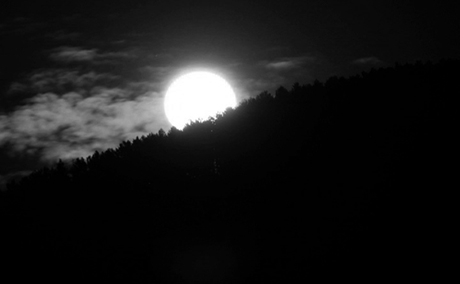
Sea of Vapors
A cascade of images cut frame by frame flow into an allegory of the lunar cycle.
- Length: 15 mins
- Year: 2014
Sounding Glass

Sounding Glass
A man in a forest is subject to a flood of impressions; rhythmic waves of images and sounds give form to his introspection.
- Length: 10 mins
- Year: 2011
Way Fare
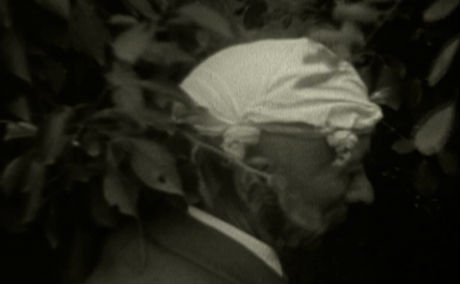
Way Fare
A layered tone poem of found images and woven soundscapes renders a shifting psychogram; a nomadic passage across spaces in and out of time.
- Length: 6:30 mins
- Year: 2009
False Friends
Falsche Freunde
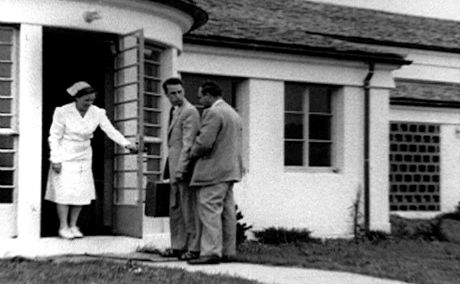
False Friends
A montage of mid-century found footage: mysterious strands are obsessively braided to create a poetic reflection about an anxious interplay of memory and projection.
- Length: 4:50 mins
- Year: 2007
Remote Intimacy
Ferne Intimität

Remote Intimacy
Stream of consciousness with fictitious and found stories and a personal reference.
- Length: 14:30 mins
- Year: 2007/2008
Memories
Erinnerungen
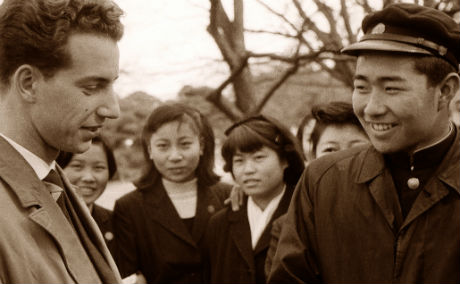
Memories
A woman grows up during the bubble economy in Japan. Why did her parents never speak about the past? Using a box full of photos found in her family archive, the filmmaker tries to construct one version of a family history.
- Lenght: 19 mins
- Year: 2004
Born October 16th, 1973, in Tokyo, Sylvia Schedelbauer first moved to Berlin in 1993, where she has been based since. She studied at University of Arts (with Katharina Sieverding). Her films negotiate the space between broader historical narratives and personal, psychological realms mainly through poetic manipulations of found and archival footage.
Selected showcases include: Berlinale, Toronto International Film Festival, New York Film Festival, National Gallery of Art Washington D.C., London Institute of Contemporary Arts, KW Institute for Contemporary Art Berlin, and Grazer Kunstverein. Awards include the VG Bildkunst Award, the German Film Critics’ Award and the Gus Van Sant Award for Best Experimental Film. Schedelbauer was a 2019/2020 arts fellow at the Harvard Radcliffe Institute.
–––Schedelbauer’s films are composed of manifold synergic strata – aural, visual, cognitive – that offer the viewer a heightened experience through the use of the flicker (or strobe effect), found footage and immersive soundscapes. (Ren Scateni, Art Review)
–––The filmmaker Sylvia Schedelbauer presents a compelling challenge to any attempt to easily situate her and her work within a particular national tradition or context. (Christopher Pavsek, The Impertinence of Saying "I": Sylvia Schedelbauer's Personal Documentaries)
–––Sylvia Schedelbauer is easily one of the most impressive moving-picture artists to emerge in the past decade. Born in Japan of a Japanese mother and a German father—both of whom severed ties to their postwar childhoods—Schedelbauer’s videos are so eloquently and exquisitely constructed that it is easy to underestimate the passion and urgency that underlie them. Driven to conjure a past to replace the one her parents have denied or hidden from her, she has, through an ingenious use of found footage and the endless possibilities of montage, created a series of works that turn artifice into a means of investigation and a bridge to repair the rift between desire and knowledge. (Tony Pipolo, Artforum)
–––Experimental filmmaker Sylvia Schedelbauer’s work stages confrontations between images and their histories. Through associational and oppositional editing strategies, she constructs dynamic images which seem to appear at the borders of vision and the limits of knowledge, filling in material and perceptual gaps that instantly reveal other blank spaces and unanswered questions: social histories collide with personal memories. By employing collage techniques and toying with said voids, Schedelbauer’s films reveal the world in a perpetually unsettled state of flux and traverses into liminal zones where time and space collapse. (James Hansen, Women to Watch, Cleo - Journal of Film and Feminism)
–––The films of Sylvia Schedelbauer invent poetic forms to explore and intertwine different modes of perception and memory. Using archival found-footage, Schedelbauer reanimates anonymous images to cast a searching, melancholy gaze upon the traces of hidden, half known, or forgotten pasts. In key films, Schedelbauer works with stroboscopic rhythms and musical structures to create abstract, subliminal narratives that pull the viewer deep into intimate and enthralling imagescapes.(Haden Guest, program notes, Harvard Film Archive)
–––It is the act of combining as much as it is the act of selection that distinguishes Schedelbauer’s work with found footage though – hybridity is an essential component of what she does, blending two or more pieces of film to create a third, a fourth etc. This spawning of new material is a process of transformation that takes place on screen, each film living out a perpetual becoming, each precipice replacing the last. These shots exaggerate the ‘evanescence’ of the film image, the quality that places us as viewers under the command of the filmmaker who ultimately decides how long we see each shot and what it will be replaced by. This is a position that Schedelbauer assumes with unparalleled care, time and consideration, ensuring at every turn that the fragments she has unearthed for us always merit a second, much closer look.(Alice Butler, exhibition booklet, Grazer Kunstverein)
–––By increasing the number of printing rolls and symphonizing them through layered fades and dissolves, Stan Brakhage, Bruce Baillie, and Gunvor Nelson produced expansive image flows that analogized the process of thought. Much of the language used by filmmakers and critics to describe these experiments can be found in recent critical commentary on the films of Sylvia Schedelbauer, which pack found footage in dozens of layers, augmented with image rotation and flicker, to engender hypnotic invocations of, as one critic puts it, “the sleeping dragon of the unconscious.” Schedelbauer attests that memory and consciousness figure prominently in her work (her first film was entitled Erinnerungen [Memories, 2004]), which has become the dominant hermeneutic for interpreting her films. Irina Leimbacher notes that, “like a Proustian madeleine,” Schedelbauer’s images “set in motion streams of associations or recollections,” while James Hansen observes “a near cosmic connection between psychology, nature, and the human body.” (John Powers, in Technology and the Making of Experimental Film Culture)
–––Sylvia Schedelbauer has a succinct and recent body of work, making her unique films in a very precise and patient fashion. Though the films she makes are brief, ranging from 5 to 20 minutes apiece, they are also very dense. A multitude of poetic images wash over the viewer, like the flowing waters the artist so loves to depict. Often these images arrive in flashes of illumination that mimic the act of blinking, or indeed approach the classical analog machination that animates the very art form of cinema. There is something elemental to be found in Schedelbauer’s work. (Greg de Cuir, Jr., program notes, Academic Film Center, Belgrade)
–––[Sylvia’s] body of work, evokes the body politic of people, and natural ecosystems, bringing us closer to what is found and what is lost, not just in film and memory, but in life and in existence itself. Be it in the felling of forest trees, and my favourite by the way, is the abstraction just before the ominous last image of a saw before it fells the tree, that crashes to the ground. It no longer remains ‘abstract’ or ‘anti-narrative’, or ‘experimental’ in its non-meaning mode, but it clinches an ethical outlook to the ways of the world and says it all, simply, in essence - the rapacious colonization of the human upon natural worlds. (Ayisha Abraham, artists conversation, Experimenta, Bangalore, India)
–––[Schedelbauer] sets her films within topographies that glean their torrid drama from the ecological site on whose edge – or within which – they are located. As such, she enlists the forest, the landscape of the sky, but also bodies of water to supply her cinema with elemental potency. Her greatest accomplishment, however, is in how she harnesses this essential, almost animist energy present in nature to illuminate an archive of human gestures, actions, rituals and sensations. In this, she causes a collapse of homocentrism, and instead engineers a restitution of the human being back to the universe. (Anuj Malhotra, Senses of Cinema)
–––In the films of Sylvia Schedelbauer, personal internal reverie and expansive cultural history collide. Assembled largely from deeply researched archival footage and radically edited (in an elegantly flickering style entirely her own), Schedelbauer’s films present a strikingly visual space of interiority in which dreams, personal biography, collective memories and family histories fuse to form a complicated vision of fragmented transnational identity in the context of 20th Century history.(Steve Polta, program notes, San Francisco Cinematheque)
–––Sylvia Schedelbauer’s films transform fragmentary found footage into hallucinatory landscapes merging large historical actions and evocative solitary gestures. Subtly using rhythmic montage and overlays of sound, Schedelbauer creates unsettling experiences in which seemingly familiar moments from the past become haunting reflections on the present. Compelling, resonant and sensually rich, these films brilliantly enrich a classic experimental film tradition.(Steve Anker, program notes, Redcat, Los Angeles)
–––The videos of Sylvia Schedelbauer reinvent the found-footage genre through their dense layers of imagery that narrate memory as an elusive object. (...) her visual material is harvested from an archive of ephemeral films housed in San Francisco—a nomadic artistic existence that manifests itself in her work through themes of migration, hidden histories and inherited rebelliousness.(Chris Kennedy, program notes, TIFF Cinematheque)
–––Fragmentary memories act like a common thread, taking us through the works of Sylvia Schedelbauer as they oscillate between experimental and essay-film genres, and which could also be called “filmic memories”. On viewing her films – which are as sensitive as they are experimental – the feeling quickly arises of delving deep into the filmmaker’s world of thoughts and ideas, even if only small, well-chosen excerpts from her life are revealed therein. (Lina Louisa Krämer, online journal, Kurzfilm Magazin)
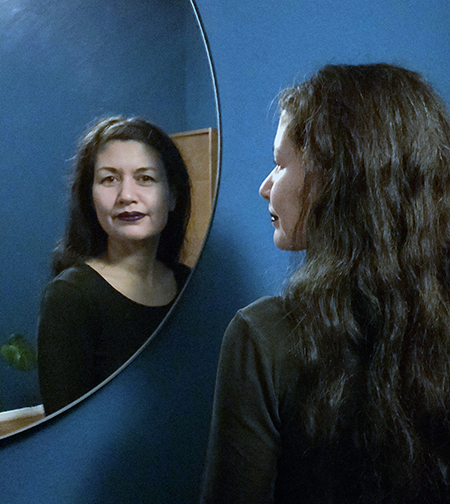
- Contact: mail(at)sylviaschedelbauer.com